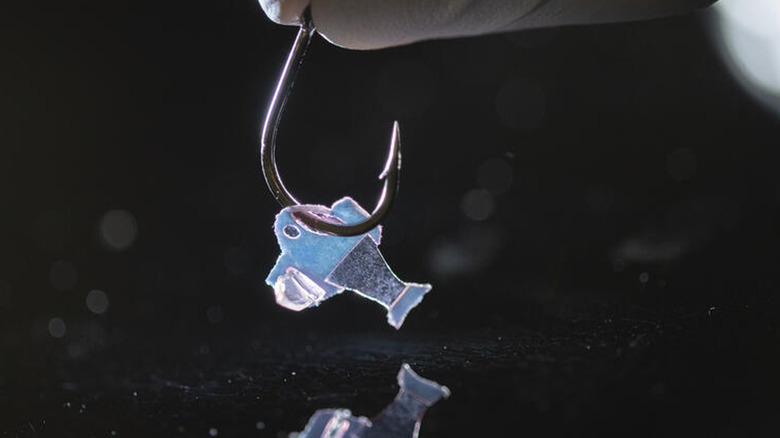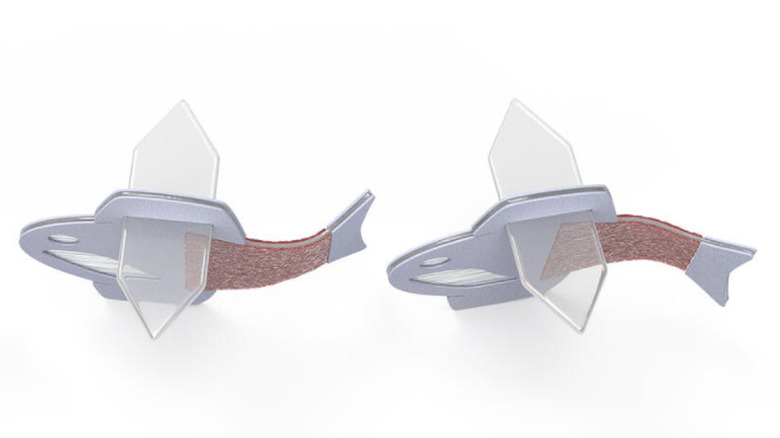Biohybrid Fish Made With Human Cells For Medical Research
Researchers at Harvard and Emory Universities have developed a fully autonomous biohybrid fish from cardiac muscle cells created from human stem cells. The fish is the test bed for research that the scientists hope will eventually lead to the creation of an artificial human heart made from human tissue. The biohybrid fish have a layer of cardiac muscle cells on each side that contract on one side as the other is triggered to stretch creating a swimming motion. The aim is to mimic the mechanics of the human heart to more closely study how human cardiac cells work to also learn more about diseases like arrhythmia.
"By leveraging cardiac mechano-electrical signaling between two layers of muscle, we recreated the cycle where each contraction results automatically as a response to the stretching on the opposite side," said Keel Yong Lee, a postdoctoral fellow at SEAS and co-first author of the study. "The results highlight the role of feedback mechanisms in muscular pumps such as the heart." When one side contracts, the other stretches and it is the stretch that triggers a mechanosensitive protein channel resulting in a contraction and stretch in a closed loop that can keep powering the fish for over 100 days.
A heartwarming story
The scientists were able to extend the swimming life of the biohybrid fish by creating an autonomous pacing node that effectively works as a pacemaker to control the frequency and rhythm of the otherwise spontaneous contractions. The autonomous pacing node coordinates the two layers of muscle tissue to help create continuous and coordinated back and forth fin movements that actually perform at similar levels to the zebrafish that the design is based on. With the fish being able to kick on for such extended periods, it gives the scientists more time to study the bioelectrical mechanisms at work.
"Our ultimate goal is to build an artificial heart to replace a malformed heart in a child," said Kit Parker, the Tarr Family Professor of Bioengineering and Applied Physics at the Harvard John A. Paulson School of Engineering and Applied Sciences (SEAS) and senior author of the paper.
"Most of the work in building heart tissue or hearts, including some work we have done, is focused on replicating the anatomical features or replicating the simple beating of the heart in the engineered tissues," said Parker. "But here, we are drawing design inspiration from the biophysics of the heart, which is harder to do. Now, rather than using heart imaging as a blueprint, we are identifying the key biophysical principles that make the heart work, using them as design criteria, and replicating them in a system, a living, swimming fish, where it is much easier to see if we are successful."
Small steps on the long road to an artificial heart
The team is under no illusions as to how far away the end goal is, however. These first milestones remain significant stepping stones on the path towards potentially finding ways to treat illness and the ultimate goal of creating an artificial human heart. The next steps are to build more complex biohybrid devices from human heart cells and slowly work their way towards more ambitious bioengineered structures.
"I could build a model heart out of Play-Doh, it doesn't mean I can build a heart," said Parker. "You can grow some random tumor cells in a dish until they curdle into a throbbing lump and call it a cardiac organoid. Neither of those efforts is going to, by design, recapitulate the physics of a system that beats over a billion times during your lifetime while simultaneously rebuilding its cells on the fly. That is the challenge. That is why we go to work."

